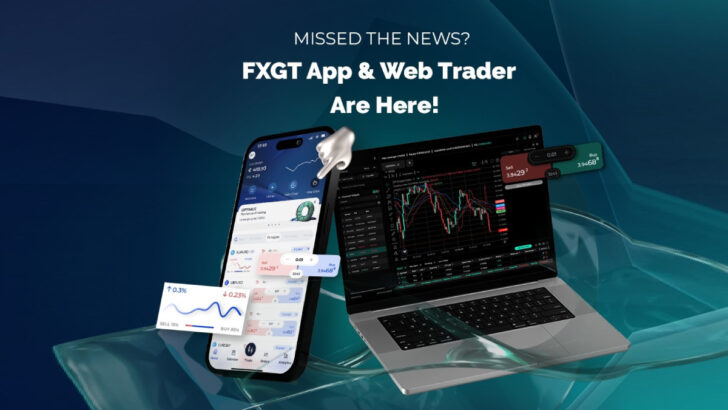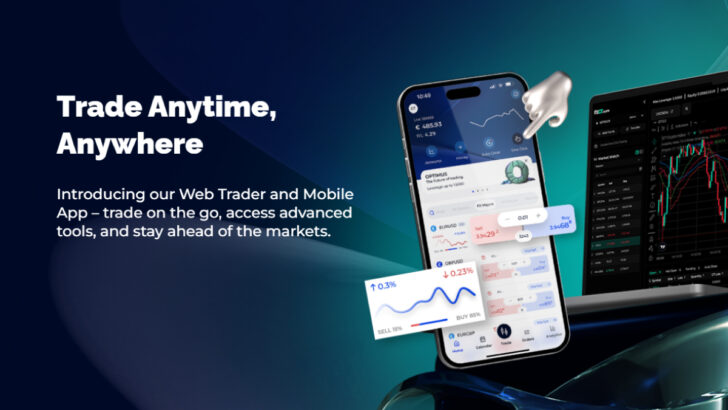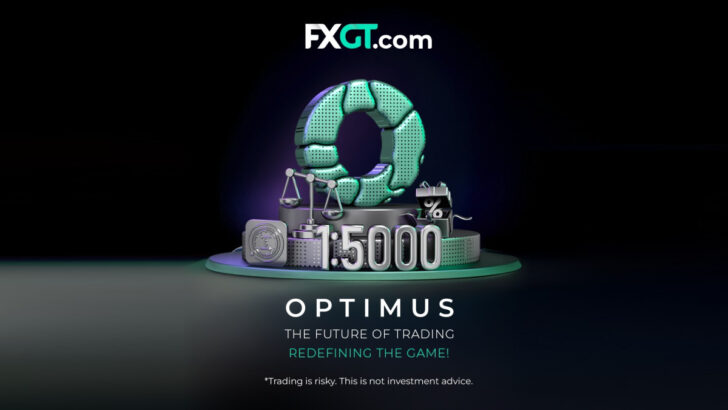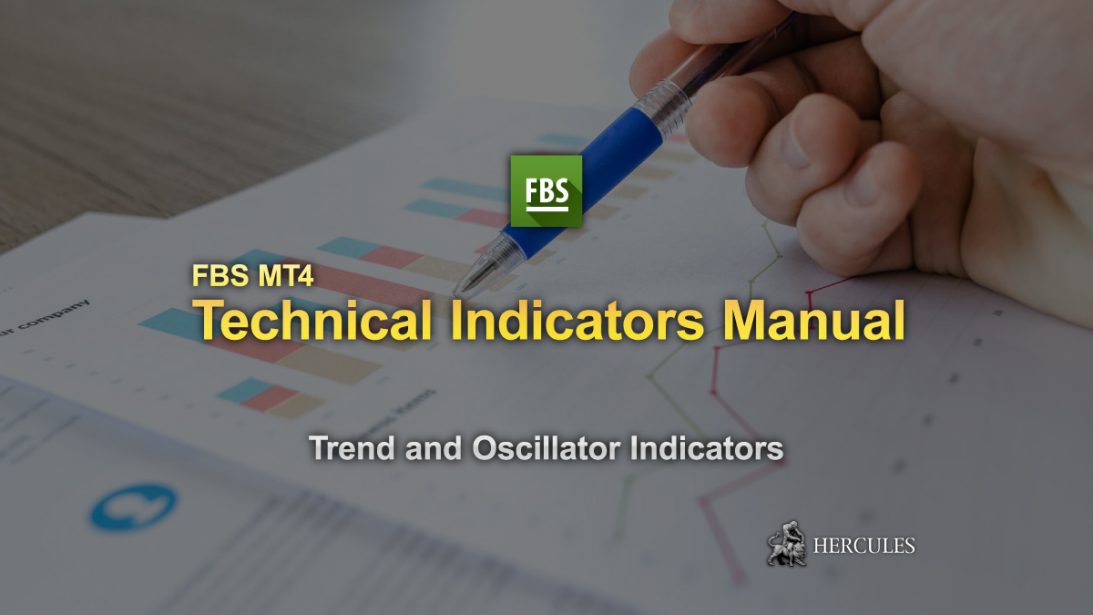
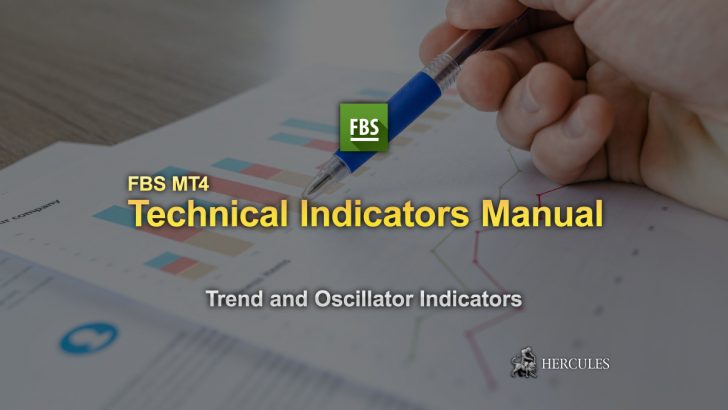
- What is Technical Indicator?
- Know the Indicator types and features
- What to be careful when using Indicators
- Try FBS Micro or Demo accounts
- FBS MT4 has all the advanced Technical Indicators
What is Technical Indicator?
You may hear the word “indicator” when you are trading Forex. This indicator is familiar to technical analysis and should be familiar to you.
What is an indicator? What kind of indicators are there? What tools can make effective use of indicators?
In this article, we will introduce the details of indicators to the tools that can be used effectively for those who have such questions.
It is also closely related to technical analysis and system trading.
Indicators in Forex may not be familiar to some people.
However, most people who use the trading tools provided by Forex companies should be unknowingly touching the indicator.
Indicators are a term that is closely related to technical analysis and can be easily understood by thinking of them as a function that accompanies charts.
If you are doing Forex trading using charts, you probably also use moving averages and Bollinger Bands.
Moving average and Bollinger band are also one of the indicators and are also the functions built into each chart on FBS MT4.
What is Technical Market Analysis?
Know the Indicator types and features
There are several types of FX indicators, which can be used according to the purpose.
If you do not know the type of indicator you are using, it is difficult to make effective use of it, so be sure to understand the type first.
Trend Indicator
Trend indicators, as the name implies, represent the market price from the perspective of trends.
It will display the sign based on the market trend.
Here are some of the popular “Trend Indicators” used on FBS MT4.
1. Ichimoku Kinko Hyo

It is a very historical indicator that is said to have been developed by an investor before the war.
It is said to be a global indicator produced by Japan, which has a strong technical tendency and is very popular among investors because it can be used in both forward and reverse directions.
The Ichimoku Kinko Hyo is composed of “turning line”, “reference line”, “cloud (between leading span 1 and leading span 2)”, and “lagging line”, and it is possible to know the direction and strength of the trend.
It can be judged as an upward trend if the candlestick breaks above the reference line and the reference line also moves upward.
If the opposite is true, it can be judged as a downtrend.
You can also grasp the direction of the trend by whether the candlestick is above or below the cloud.
However, if the candlestick is in the clouds, it may be a very weak trend or a range market, so it can be used as a judgment material to forgo trading.
It is an excellent indicator that can judge not only the direction of the trend but also the strength of the trend to some extent just by using the Ichimoku Kinko Hyo.
Use Ichimoku Kinko Hyo on FBS MT4
2. Moving average

Moving average is a representative of trend indicators.
It is an index that has been used for a long time in the field of statistics, and since it was found that it can also be used for market analysis, it has been used for the analysis of various investment products.
The most popular moving average is a combination of a long-term moving average and a short-term moving average, and the golden cross, which is famous as a buy sign, is also a sign that appears on the moving average.
It is one of the most famous trend-based technical indicators and is an indicator that many investors are always aware of.
There are many types of moving averages, but the term moving average usually refers to a simple moving average.
The simple moving average is the sum of the closing prices for several days and divided by the number of days collected as a sample.
For example, in the case of a 5-day moving average, the all-day closing prices for each of the 5 days starting from the current day are summed, and the number divided by 5 is pointed on the chart.
The line that repeats this every day and connects it as the simple moving average line.
The more days you measure, the gentler the moving average will be.
On the contrary, the moving average line of about 2 to 3 days is almost linked to the price movement of the chart and draws a line close to the closing price of the chart.
The weighted moving average has been improved to emphasize the latest price.
The exponential moving average line is not an average value for a certain period, but an irregular weighted moving average line that treats all the numerical values of the held data as the calculation period.
The signal on the moving average is the cross of the short and long lines.
When the short-term line breaks above the long-term line, it is called “golden cross”, and when the short-term line breaks below the long-term line, it is called “dead cross” and both are trading opportunities.
3. Bollinger Bands

Bollinger Bands is also a familiar index for traders focusing on technical analysis and is used by incorporating it into the moving average line introduced above.
Bands with three regions above and below the moving average line are displayed, and they are called 1σ, 2σ, and 3σ from the side closest to the moving average line.
By using it well, you can check when to sell and when to buy, and it can be read that the closer it is to + 3σ, the more it is overbought, and the closer it is to -3σ, the more it is oversold.
It is a technical indicator that tries to detect the price limit by calculating the deviation from the moving average line.
The centerline is the moving average line, and the lines above and below it are the standard deviation lines.
The Bollinger band is displayed as ±σ with a standard deviation of 1× plus or minus and ±2σ with a standard deviation of 2× added to the center moving average line.
Price movements are said to fall within the ±σ line with a probability of approximately 68%.
Furthermore, it is said that there is a 95% probability that it will fall within ± 2σ.
In reality, there is an expansion and contraction of the bandwidth, and it is dangerous to simply contralateral with mathematical information alone, but because of this clear signal, Bollinger Bands are favored by many traders.
The Bollinger Bands are a useful technical indicator that gives a signal in both trend and range quotes but you should be aware that the reading of signals is reversed in trend and range quotes.
If it breaks through the σ line in the trend market, you may judge it as a signal that the trend will continue to grow.
On the contrary, if it breaks through the σ line in the range market, you may judge that it is a signal that the price movement reverses.
To display the Bollinger band on the MetaTrader chart, enter the standard deviation value once and display it multiple times.
By repeating the display work three times with ±σ, ±2σ, and ±3σ, it is possible to display seven graphs including the centerline.
Use Bollinger Bands on FBS MT4
4. Breakout
Breakout is the logic of an automated trading system that works well in combination with other technical indicators.
Breakout shows a phenomenon that occurs when the price movement moves into the next time frame break and steps into it.
To be precise, the breakout is not a technical indicator, but if we can catch the moment when the breakout becomes decisive, we should be able to measure the initial movement of the trend.
Therefore, the task of catching a breakout is very important.
Using an EA that combines a breakout with other technical indicators as a triggering condition for buying and selling can make a more precise mechanism.
The task of catching a breakout is a trader’s psychology.
After repeating small price movements endlessly, the price soars at a stretch, and even if you take a position at the moment of a sudden drop, it will return to the original price again, and the price movement will be opposite to the position you took.
The monotonous range quotes that do not accompany the volume are often bad, and conversely, the breakout that occurs after a firm entanglement with a large number of sell and buy orders tend to be highly reliable.
5. DMI

DMI (Directional Movement Index) is a technical index that was devised by arranging the moving average line and reads the uptrend and downtrend of the market.
MetaTrader uses the name Average Directional Movement Index.
It is called ADX by taking the AD of Average Directional and the last X of Movement Index, and the DMI is an abbreviation for Directional Movement Index which “Average” is missing.
However, since the MT4 also incorporates the ADX period as a parameter, you may use ADX when displaying on the chart.
The + DI line shows the strength of the uptrend and the -DI line shows the strength of the downtrend.
And the ADX line can read the strength of the trend itself.
Typical signals of this indicator are the +DI and -DI golden crosses and dead crosses.
The timing of trading is when +DI surpasses -DI or surpasses -DI.
Oscillator Indicator
Oscillator-type indicators are indicators that give signs of overbought or oversold, just like Bollinger Bands.
1. MACD (Moving Average Convergence / Divergence)

MACD is an indicator introduced by Gerald Appel in 1979 and used by investors around the world.
It is an abbreviation for the “Moving Average Convergence / Divergence Trading Method”.
There are various methods using MACD, but the recommended view for beginners is to consider the cross of two long-term EMAs and short-term EMAs as an entry signal.
It is also possible to judge that the higher the MACD is, the higher the trend is, and the lower the MACD is, the lower the trend is.
MACD is an indicator that allows you to know the direction of the trend and the strength of the trend regardless of the currency pair, but if you use it alone, it will be more deceptive, so you may use it together with other trend indicators such as Bollinger Bands.
It is a well-known technical indicator and is called “McD” by traders.
Since the market price is analyzed using a combination of three moving averages, the curve displayed will change greatly by increasing or decreasing the number of days of the closing price to be measured, similar to the moving average.
The exponential moving average used in MACD is a technical index that can compensate for the weaknesses of the simple moving average.
Since the simple moving average line treats the current price and the past price equally, it inevitably lags the real-time price movement.
In that regard, MACD uses an exponential moving average that focuses on the most recent price.
The MACD line is the point obtained by subtracting the numerical value of the long-term line from the numerical value of the short-term line of the moving average.
The moving average line of MACD is the line called MACD signal.
When the MACD line breaks above or below the signal line, it is a typical MACD signal, which is called the golden cross or dead cross, and it is the timing of buying and selling.
It seems that MACD signal is often measured in 13 days (13 lines), long-term line in 26 days (26 lines), and MACD signal in 9 days.
If you want to customize MACD yourself, change the number of days for short-term, long-term, and MACD signals.
2. RSI (Relative strength index)

RSI (Relative strength index) is an index for measuring the strength of buying pressure and selling pressure.
Specifically, we can measure the end of the rise and fall of the market, and when the buying pressure decreases during the rising phase, it is time to sell.
On the contrary, it is an indicator that is preferred by traders who mainly focus on contrarian, such as the timing of buying when selling pressure decreases during the downturn.
This is a typical technical index for oscillators and is an index that is easy to use in the range market where there is a feeling of stagnation in price movements.
For example, if the market price approaches the 70 line and breaks above the line, it is a sign of overbought.
You can determine that the overall market is too biased towards a “buy order” and usually moves back below the 70 line.
On the contrary, when the market price falls and the line of 30 is broken, it usually returns to above the 30 line.
Of course, prices are not guaranteed to come back, as in the 70 and 30 lines are not absolute.
Also, the number of days for calculating RSI is important.
Like other technical indicators, the RSI is calculated by analyzing the market price over a period of time.
Therefore, how many days to calculate the sample becomes important.
Generally, it is often measured in 9 days or 14 days.
3. Stochastic Oscillator

Like RSI, Stochastic Oscillator is a numerical representation of buying and selling pressures.
An index that combines multiple lines, which are % K, % D, and Slow% D, respectively.
Slow% D is used as an index called slow stochastic oscillator, and the timing of buying and selling is measured by checking both.
Stochastic oscillators can be used to get out of the box market and time when a clear trend occurs in the market.
On the contrary, in a market with a solid direction, it is often unusable.
Use Stochastic Oscillator on FBS MT4
4. Pivot
Pivot is a technical index that is said to be effective for short-term transactions.
It is popular with day traders because it shows important points of the market price on the day based on the price of the previous day.
The feature of Pivot is that it can display the important points of the current market price concretely based on the price of the previous day.
Since it is a technical index devised to cope with the latest price movement, it can be said to be a technical index that is often used for traders who trade and settle in a short period such as day traders and swing traders.
It is advisable to buy and sell by anticipating price movements that greatly penetrate, and contradictory to conduct buying and selling with the expectation that price movements will rebound.
Unfortunately, Pivot is not included by default in MetaTrader.
What to be careful when using Indicators
We have introduced various indicators, now let’s think about the points to note when using the indicators.
- Indicators are not all-purpose
- When using indicators in Forex trading, you may come across a scene where the Bollinger Bands, which should be proud of high accuracy, greatly penetrated ± σ3. In addition, oscillator-type indicators may not move as expected in strong up or down markets, even though they are giving signs. In this way, technical analysis is not always as expected because it analyzes the future from past market prices.
- Too many indicators can confuse you
- You can use multiple indicators in combination, but if you refer to too many indicators, you will not know which one to refer to. The important thing is to find the technical analysis that you are good at, adopt the appropriate indicator, and study it carefully.
How to predict future Forex market price?
Try FBS Micro or Demo accounts
As explained above, indicators are by no means all-purpose.
There is no sacred treasure-like indicator in the world that can handle all markets.
It is also not recommended for Forex beginners to use too many indicators.
This is because it is more likely that you will be blunted and miss an entry opportunity, or that you will miss the timing of payment.
So what should we keep in mind when actually using the indicator?
There are as many indicators as there are stars in the Forex market.
Of course, if you are a seasoned investor, you will use a combination of indicators that suits you based on your own experience, which is ideal.
However, it is difficult to do if you are inexperienced, so it is recommended to use a combination of multiple major indicators used by many investors.
Of course, it is not preferable to be biased toward trend indicators or to use only oscillator indicators.
For example, Bollinger Bands, which are representative of trend indicators, and also oscillator-based stochastic oscillators.
In order to further improve reliability, it is better to use a combination such as MACD that supplements both indicators.
For Forex beginners, it is recommended to select from trend indicators and oscillator indicators centering on the major indicators introduced in this article in a well-balanced manner, and limit the use of at most 2 to 3 types of indicators.
In addition, when using a new indicator, it is important to practice with a demo trade first, or to perform sufficient verification with a small amount trade such as one currency unit.
Open FBS’s Micro or Demo account
FBS MT4 has all the advanced Technical Indicators
In order to master the indicator, the trading tool must have the indicator built-in.
The most popular trading platform in the Forex market is the MT4, which is famous as a trading tool with abundant indicators.
MT4 is an abbreviation for MetaTrader4, and is popular with many Forex investors as a trading tool.
As a big attraction, it supports automatic trading by system trading.
It can be used for discretionary trading as a high-performance tool, but if you are familiar with MT4, it will be smooth when you move to system trading.
1. MT4 can be used on any devices
FBS MT4 has many advantages, one of which is that it doesn’t choose a specific computer.
No matter how sophisticated the tool is, if it works only on the latest personal computers, many people will not be able to use it.
However, FBS MT4 is designed to be easy to handle even on low-spec PCs and also as mobile apps, which is also a secret that has many users.
FBS Trader – The Best Mobile Trading Platform
2. FBS MT4 has abundant indicators
FBS MT4 is compatible with all indicators introduced this time.
As standard equipment, we have introduced multiple indicators, and of course, the typical indicators introduced above are also installed on FBS MT4 already.
Also, once you get used to trading to some extent, you will often use a combination of indicators instead of just one.
FBS MT4 also supports such a combination display, and you can display your favorite indicators on the screen at once.
3. FBS MT4 is highly customizable
Rich indicators are the appeal of FBS MT4, but the ability to customize them is also an advantage.
In addition, FBS MT4 indicators are under development day and night and will continue to increase.
Therefore, there are indicators that use FBS MT4’s unique technical indicators, and the better your technical analysis, the more you can use MT4 effectively.

